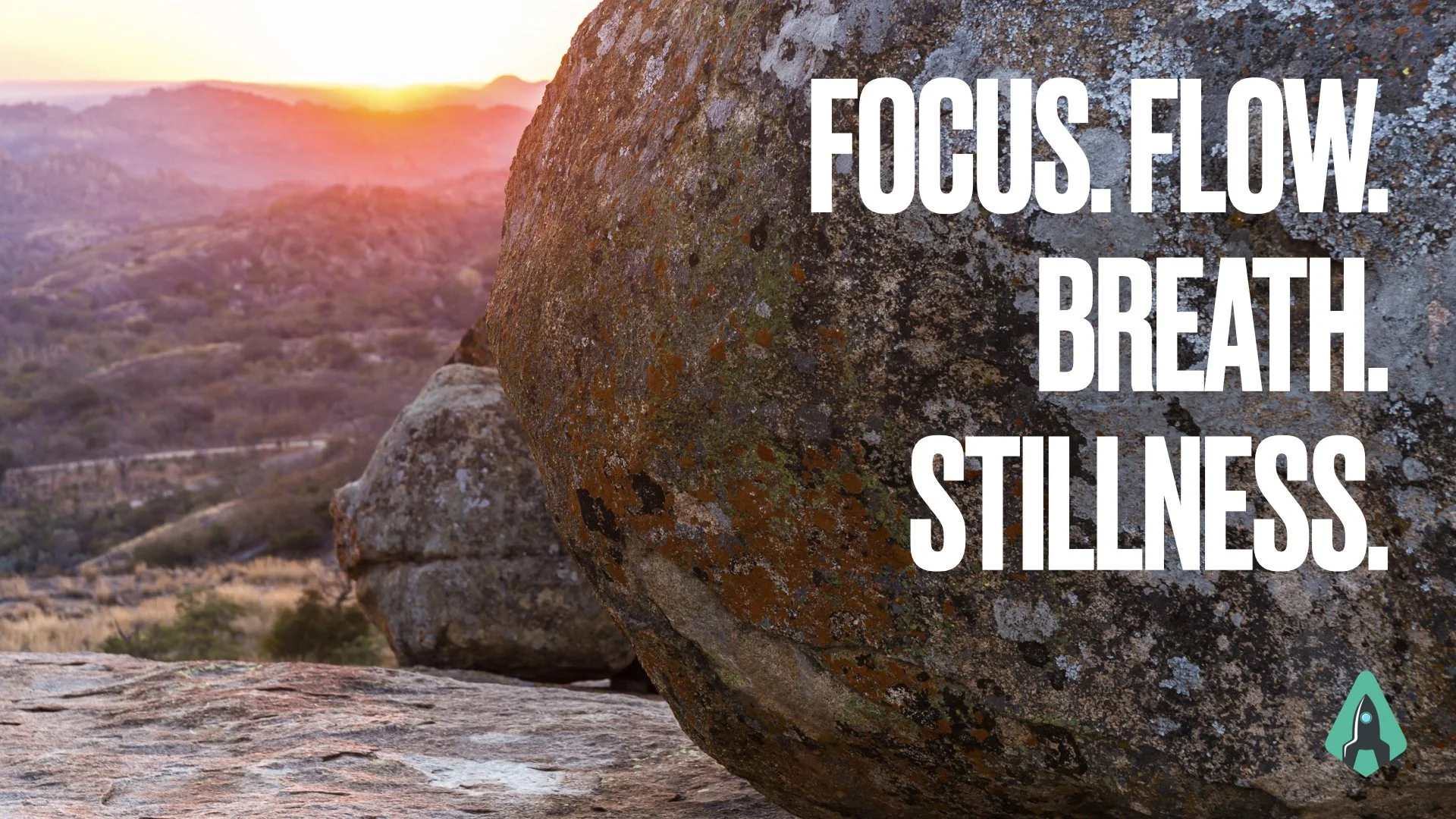Focus. Flow. Breath. Stillness.
The Hidden Ingredients of Sustainable Performance
Finally, a Friday without meetings.
After an exhausting week of back-to-back calls, meetings, etc., I blocked a rare thing in my calendar — focus time.
No interruptions. No context switching.
Just me, my thoughts, and work that mattered.
A few hours later, something shifted.
Time disappeared. Ideas connected effortlessly. I entered that deeply satisfying state psychologists call flow — where work stops feeling like effort and becomes pure engagement.
That moment reminded me of something simple but essential:
Focus time isn’t a luxury. It’s a condition for deep work and genuine satisfaction.
We Don’t Just Forget to Breathe — We Forget How
Running late. Red light. Heart pounding.
The body goes into fight-or-flight — even when the “danger” is just a meeting starting in five minutes.
Here’s the thing: our biology can’t tell the difference. And that’s where it gets interesting.
Research from Switzerland, Spain, the U.S., and Belgium shows that deep breathing doesn’t just calm us down — it changes how our lungs work.
Each deep breath reorganizes the protective fluid in our lungs, making them more flexible and efficient.
Shallow breathing, over time, literally makes them stiffer.
Now think about your workplace.
Most organizations under pressure do exactly the same thing: they breathe shallowly.
They tense up, react faster, think shorter.
Conversations shrink to to-dos. Reflection gives way to urgency.
Everyone’s running — no one’s breathing.
Deep breathing — in a body or a business — is not a luxury.
✔️ It’s what restores movement, oxygen, and perspective.
✔️ It’s what makes systems flexible again.
So yes, that deep sigh at the red light won’t turn it green.
But it might stop you — and your team — from burning out on the way there.
The Science Behind Flow and Motivation
According to Self-Determination Theory (Deci & Ryan), motivation thrives when three core needs are met:
Autonomy – doing something by choice, not obligation.
Competence – feeling skilled and challenged.
Relatedness – connecting our work to something that matters.
Flow happens right where autonomy and competence intersect.
It’s the space where we stop managing time — and start creating value.
Yet in busy organizations, we often measure productivity by activity, not impact.
We fill calendars instead of creating outcomes.
We lose the stillness that gives work meaning.
Maybe we don’t need more energy.
Maybe we need more oxygen — the kind that comes from focus and space.
The Breath of an Organization: Communication
In biology, breathing organizes life.
In organizations, communication organizes energy.
When it flows freely, teams exchange oxygen — ideas, feedback, trust.
When it’s blocked or shallow, tension builds up.
Too often, communication becomes transactional: updates instead of understanding, talking instead of connecting.
But in thriving teams, it’s relational: curiosity replaces assumptions, and listening becomes leadership.
Ask yourself:
Are our meetings full of messages — or meaning?
Do people speak up, or just report?
Do we listen to understand — or to respond?
Communication is how organizations breathe.
If it’s shallow, the system stiffens.
If it’s deep, energy moves again.
Stillness as a Strategy
In a world that moves faster every day, stillness has become a strategy.
Not because nothing happens in stillness — but because everything meaningful does.
Neuroscience shows that moments of pause are when the brain consolidates learning, connects dots, and generates insight.
In leadership, reflection fuels direction.
Yet many teams treat stillness as absence — instead of presence.
They rush from one meeting to the next, confusing motion with progress.
The truth?
🧠 Focus creates output.
💬 Communication creates connection.
💭 Stillness creates clarity.
Together, they create sustainable performance.
From Concept to Practice: How Leaders Can Create Space for Flow
Here are a few practical ways to bring focus, flow, and stillness into everyday leadership:
1. Design Focus Blocks — and Protect Them
Block time for deep work as intentionally as meetings.
Turn off notifications, close your calendar, and focus on one high-value task that energizes you.
2. Rethink Meeting Culture
Audit your recurring meetings:
Which create real alignment or learning?
Which could be replaced by a short message or shared document?
Aim for fewer meetings — but deeper ones.
3. Encourage “Breathing Space” Between Tasks
Just like lungs need time between breaths, minds need recovery between tasks.
Add short pauses between calls or projects — even two minutes of stillness can reset attention.
4. Model Reflective Leadership
Leaders set the rhythm.
Show your team that taking a pause isn’t slowing down — it’s recalibrating.
Ask reflective questions instead of only seeking quick answers.
5. Make Communication Relational
Create spaces where people feel safe to think aloud, not just report results.
Replace “What’s the status?” with “What’s emerging?” or “What are you learning?”
The Quiet Rhythm of High Performance
Focus, communication, and stillness aren’t opposites of productivity.
They are its foundation.
When we learn to breathe between tasks, speak with purpose, and pause with intention, performance stops being exhausting — and starts being sustainable.
Maybe the best thing we can give ourselves and our teams isn’t another tool, workshop, or wellness app.
Maybe it’s simply time to breathe, think, and connect.
Because in the end, resilience isn’t built in crisis —
it’s built in the breath, focus, and stillness before it.
💡 Reflection Questions for Leaders
What would happen if I protected one hour a week for deep, uninterrupted work?
Do my team’s meetings create alignment or just motion?
Where in my week do I allow silence — for ideas to surface?
Focus. Flow. Breath. Stillness.
They don’t just restore balance —
they redefine performance.

